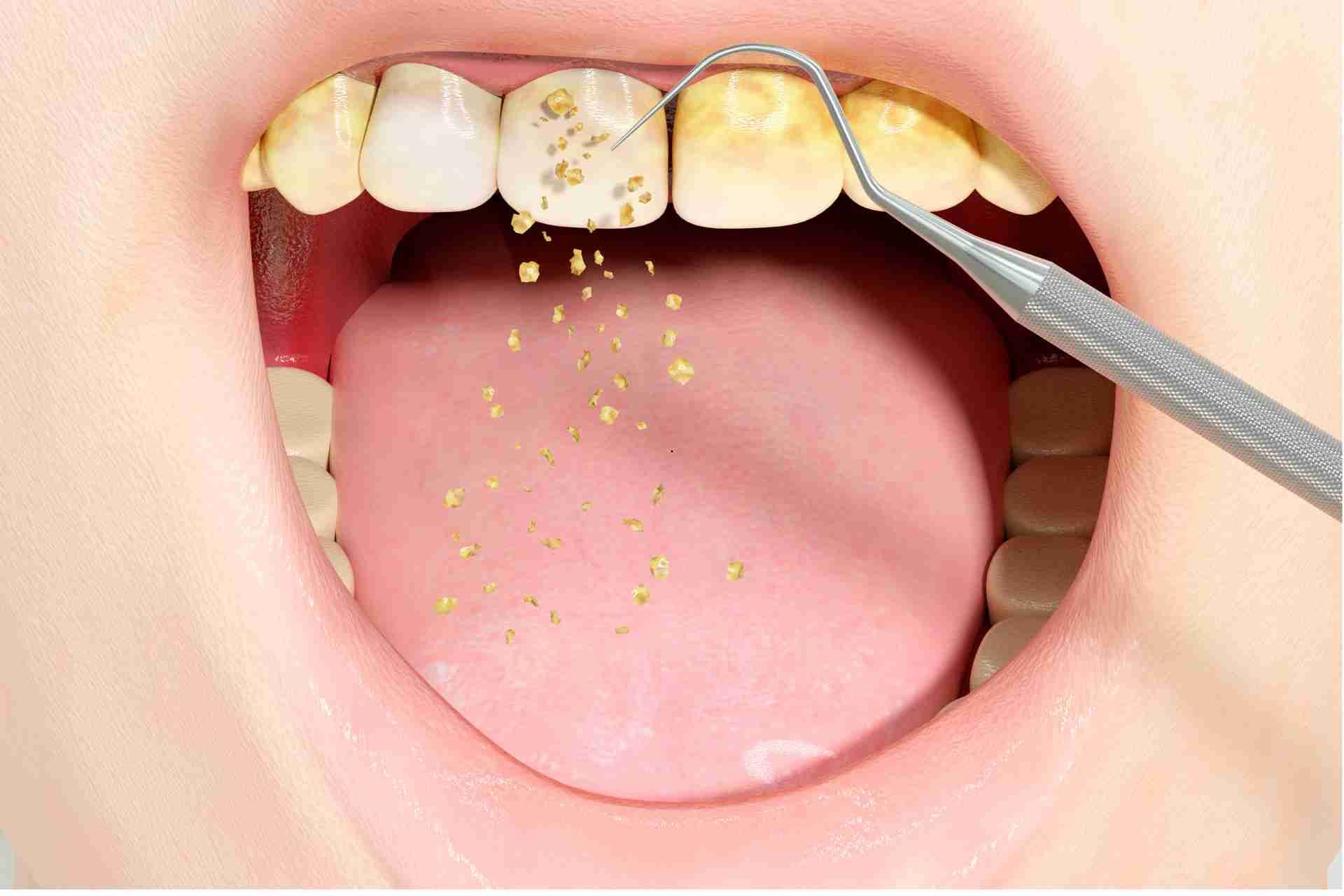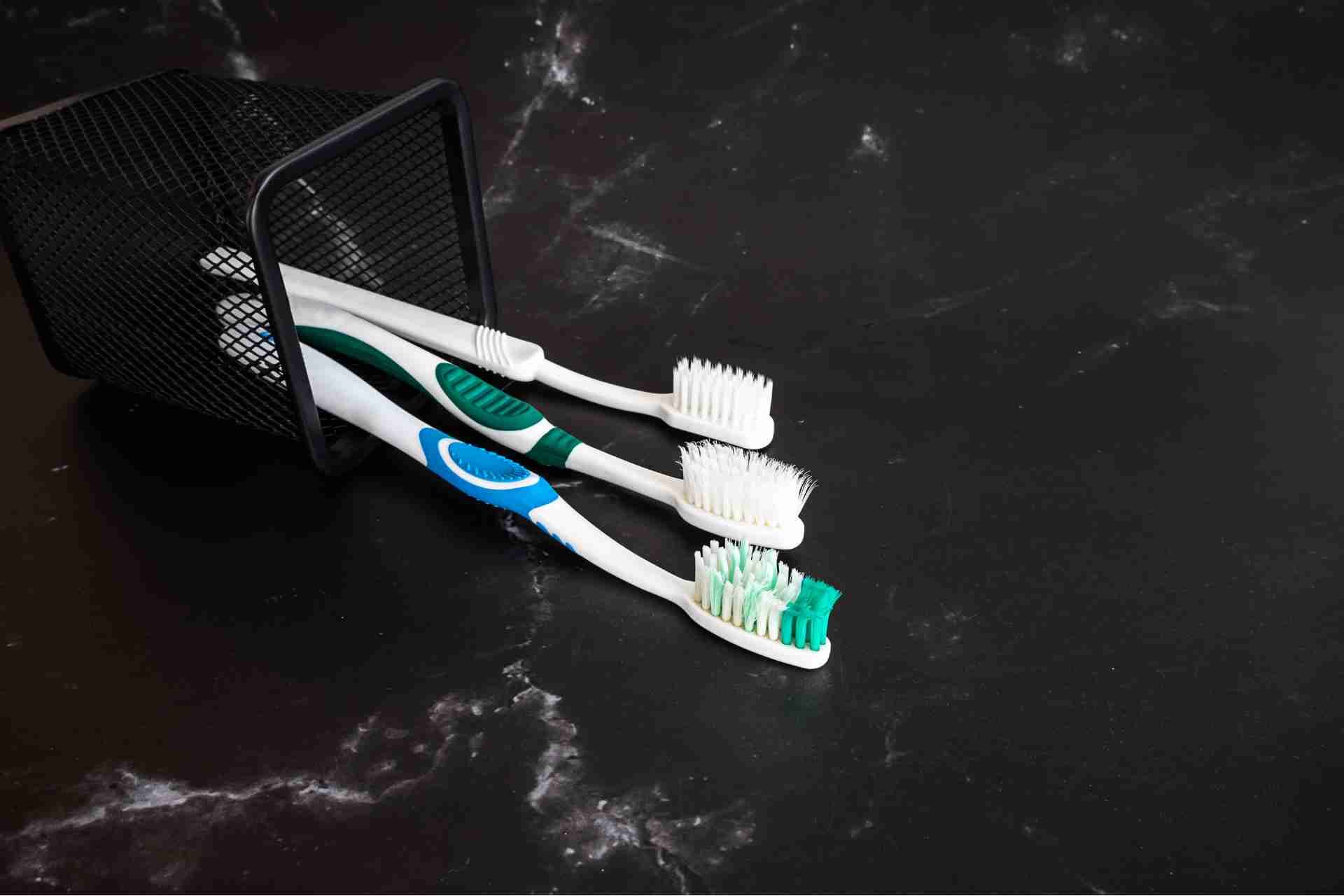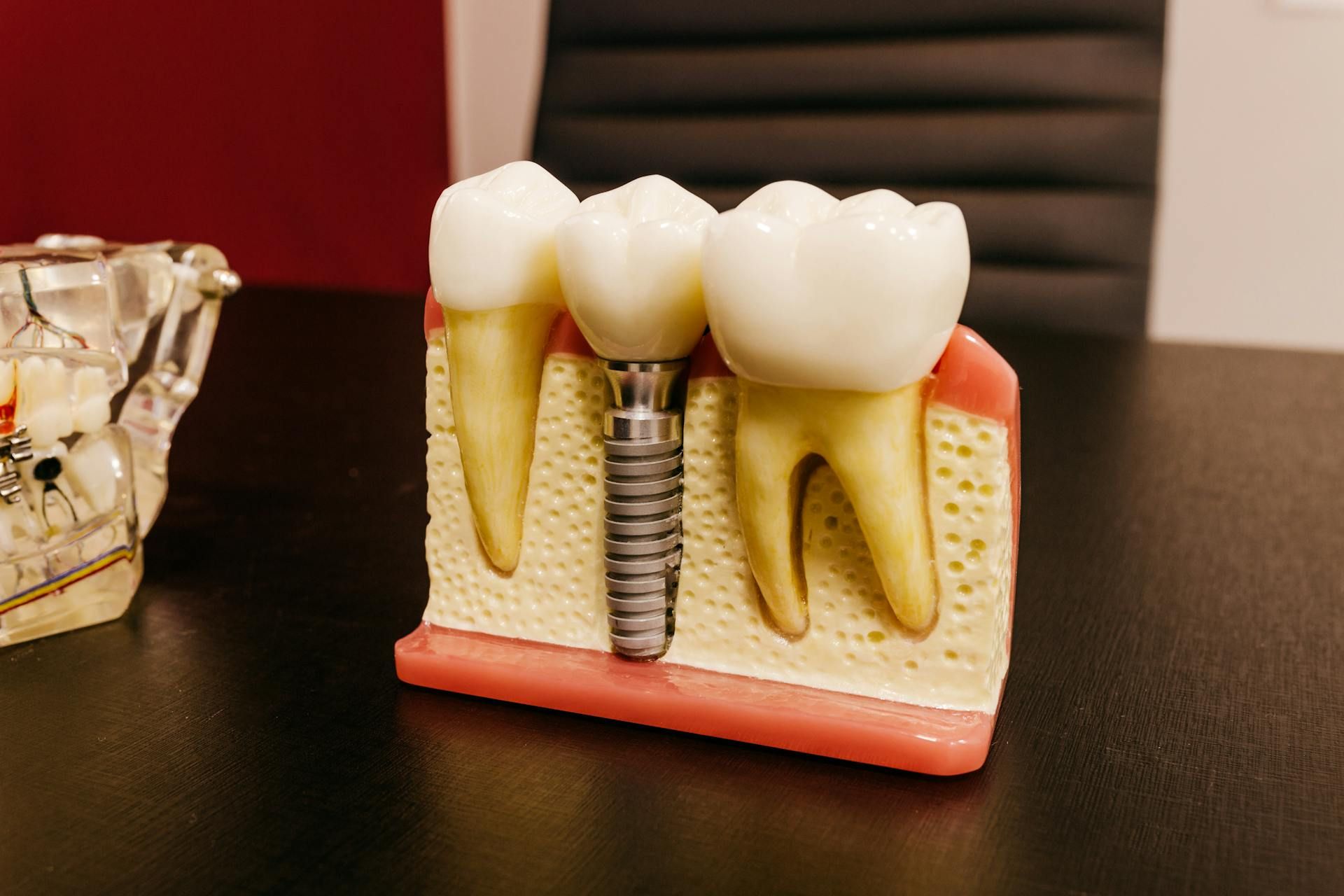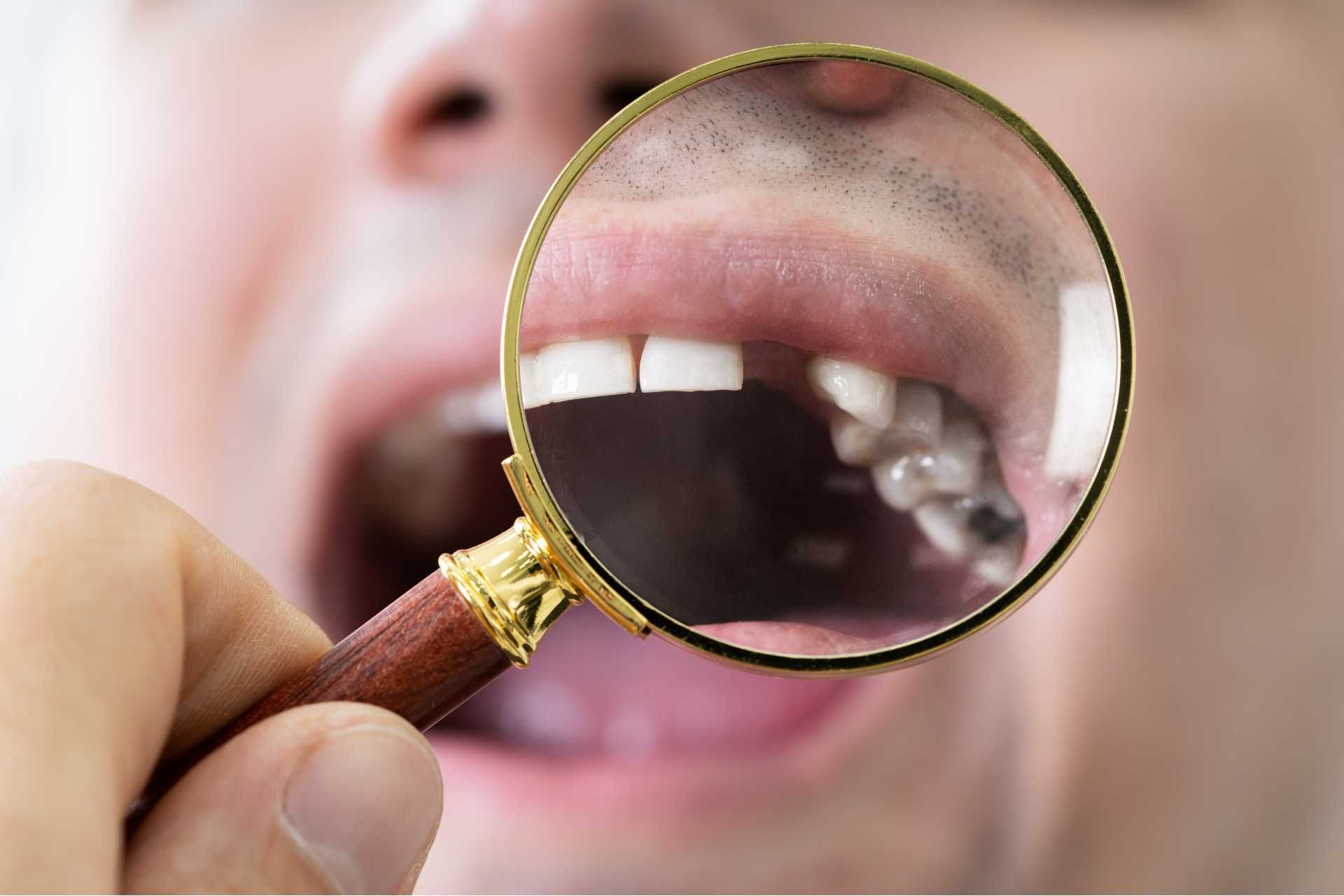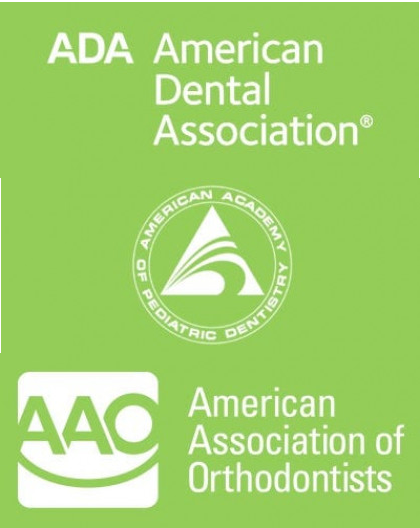Signs of Tooth Enamel Erosion

Tooth enamel is the hard, protective outer layer of your teeth that helps protect against decay and cavities. However, despite its durability, enamel can still erode over time due to a variety of factors.
If your tooth enamel, the protective layer covering your teeth, is as sturdy as a fortress wall, then erosion can be like a stealthy invader weakening its defenses.
But how can you tell if this invisible enemy is at your doorstep?
Look out for the crucial indicators of tooth enamel erosion.
What causes tooth enamel loss?
One of the main culprits of tooth enamel erosion is acidic foods and drinks. Consuming foods and beverages high in acid, such as citrus fruits, soda, and wine, can wear down the enamel over time. The acid in these substances weakens the enamel, making it more susceptible to erosion.
Another common cause of enamel erosion is poor oral hygiene. Not brushing and flossing regularly can allow plaque to build up on the teeth, which can lead to erosion. Plaque contains bacteria that produce acid, which can eat away at the enamel if not removed.
Certain medical conditions, such as acid reflux and bulimia, can also contribute to enamel erosion. Acid reflux causes stomach acid to come up into the mouth, which can erode the enamel. Similarly, frequent vomiting associated with bulimia can expose the teeth to stomach acid, leading to erosion.
Brushing too hard or using a hard-bristled toothbrush can also contribute to enamel erosion. Aggressive brushing can wear down the enamel and damage the gums, so it's important to brush gently with a soft-bristled toothbrush.
Genetics can play a role in enamel erosion. Some people are more prone to erosion due to their genetic makeup, making it important to take extra care of their teeth to prevent further damage.
Common Signs of Tooth Enamel Erosion
Increased Tooth Sensitivity
If you're experiencing heightened sensitivity in your teeth, it could be an early indicator of tooth enamel erosion. Enamel protection is crucial in maintaining healthy teeth, as enamel serves as a protective layer for your teeth. When this enamel erodes, it exposes the sensitive inner layers of your teeth, leading to increased sensitivity.
Various factors can contribute to enamel erosion and sensitivity causes. Acidic foods and drinks, such as citrus fruits and carbonated beverages, can wear down enamel over time. Additionally, poor oral hygiene practices, like infrequent brushing or using a hard-bristled toothbrush, can also contribute to enamel erosion. Teeth grinding, known as bruxism, can put excessive pressure on your teeth, causing enamel to wear away faster.
To help prevent further enamel erosion and alleviate tooth sensitivity, consider using toothpaste specifically designed for sensitive teeth. These toothpaste varieties often contain ingredients that help strengthen enamel and reduce sensitivity. It's important to address enamel erosion early to prevent more severe dental issues down the line.
Tooth Discoloration
Tooth discoloration is a common dental issue that can be caused by various factors such as diet, lifestyle habits, and certain medications. Stains on your teeth can be extrinsic, caused by external factors like coffee, tea, or smoking, or intrinsic, which are stains within the tooth structure due to factors like excessive fluoride intake or certain medications.
To prevent tooth discoloration, it's essential to maintain good oral hygiene habits such as brushing your teeth twice a day, flossing daily, and limiting consumption of stain-causing foods and drinks. Regular dental cleanings can also help remove surface stains and prevent discoloration.
If you already have tooth discoloration, treatment options include professional teeth whitening procedures performed by a dentist, which can effectively remove stains and brighten your smile. In severe cases of intrinsic discoloration, treatments like dental bonding, veneers, or crowns may be recommended to improve the appearance of discolored teeth. Always consult with your dentist to determine the best treatment option for your specific case.
Indentations on Teeth
Tooth discoloration can sometimes be accompanied by indentations on your teeth, which may indicate underlying issues with enamel erosion. These indentations, also known as cupping, can appear as small dents or pits on the surface of your teeth. When tooth enamel erodes due to factors like acidic foods, beverages, or medical conditions, it weakens the protective layer of your teeth, leading to these indentations.
To prevent further enamel erosion and the development of more indentations on your teeth, it's crucial to practice good oral hygiene. This includes brushing your teeth twice a day with fluoride toothpaste, flossing regularly, and visiting your dentist for routine check-ups. Additionally, avoiding acidic foods and drinks can help preserve your enamel and prevent erosion.
If you notice indentations on your teeth, seeking treatment from your dentist is essential. Depending on the severity of the enamel erosion, treatment options may include fluoride treatments, dental bonding, or in more severe cases, dental crowns. Early detection and intervention can help protect your teeth from further damage and preserve your oral health.
Stages of tooth Enamel Erosion
Understanding the stages of tooth enamel erosion can help individuals take proactive steps to protect their dental health.
Stage 1: Initial Demineralization
The first stage of tooth enamel erosion is called demineralization. This occurs when acids from plaque and bacteria in the mouth begin to soften and weaken the enamel, making it more susceptible to damage. During this stage, individuals may not notice any visible signs of erosion, but teeth may become more sensitive to hot, cold, sweet, or acidic foods and drinks.
Stage 2: White Spots
As enamel continues to erode, white spots may begin to appear on the surface of the teeth. This is a sign that minerals are being lost from the enamel, creating a chalky, opaque appearance. At this stage, enamel erosion may be reversible with proper dental care, including fluoride treatments and improved oral hygiene practices.
Stage 3: Cracks and Pits
As enamel erosion progresses, teeth may develop small cracks, pits, or indentations on the surface. These can be breeding grounds for bacteria and plaque, leading to increased risk of decay and cavities. At this point, enamel erosion may be irreversible, and restorative treatments such as dental fillings or crowns may be necessary to protect the teeth from further damage.
Stage 4: Severe Erosion
In the final stages of tooth enamel erosion, the enamel may become severely worn down, exposing the underlying dentin layer. This can result in increased sensitivity, pain, and a higher risk of tooth decay and infection. In severe cases, teeth may become discolored, weakened, or even fractured, requiring more extensive restorative treatments such as root canals or extractions.
Preventing Tooth Enamel Erosion
While some degree of enamel erosion is normal over time, there are steps individuals can take to help protect their teeth and minimize the risk of erosion. These include:
- Practicing good oral hygiene, including brushing twice a day, flossing daily, and using fluoride toothpaste.
- Limiting consumption of acidic and sugary foods and drinks.
- Avoiding tobacco products, which can contribute to enamel erosion and other dental issues.
- Scheduling regular dental check-ups and cleanings to catch and address any signs of erosion early.
How tooth enamel can be repaired?
There are several ways in which tooth enamel can be repaired and strengthened. One common method is through the use of fluoride treatments. Fluoride is a mineral that can help remineralize and strengthen enamel, making it more resistant to acid attacks and decay. Fluoride treatments can be done in the dentist's office or at home using fluoride toothpaste and mouthwash.
Another option for repairing tooth enamel is through the use of dental bonding or sealants. Dental bonding involves applying a tooth-colored resin to the surface of the tooth to cover up imperfections and protect the enamel. Sealants are thin coatings that are applied to the chewing surfaces of the back teeth to prevent decay and erosion of the enamel.
For more serious cases of enamel erosion, a dental crown may be recommended. A dental crown is a custom-made cap that is placed over the tooth to protect and restore its shape and function. Crowns can also be used to cover up teeth that are severely worn down or damaged.


